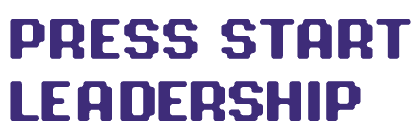Mastering the Art of Dialogue for Enhanced Team Performance and Game Production Excellence
“For one of the few species that can communicate, we sure do suck at it!”
Ever had to explain your character’s backstory to a non-gamer friend who has no clue why your tenacious hero has to fight a legion of pixelated zombies? It’s hard, right? Now imagine the monumental task of trying to communicate a whole new game world to a team of developers, artists, and designers. We, as homo sapiens, have the gift of communication. We’re one of the few species who can use words to express complex ideas, negotiate peace treaties, or even just order a decent cup of coffee. But let’s be honest, despite all our linguistic prowess, we often mess it up, especially in an industry as complex and dynamic as game development.
Communication is the lifeblood of video game production. It’s the invisible force that guides a concept from a vague idea scribbled on a beer mat to a finished, polished game. It can make the difference between a successful launch and a delayed one, between a cohesive team and a disjointed group of individuals, between a game that players love and one that they abandon after the first level.
Level One: The Quest for Clarity
A game’s success depends not only on the talent of its team but also on how effectively they can communicate. Communication in game development is like a quest: it’s all about clarity. You wouldn’t send your game character on a quest without a clear objective, would you? The same goes for your team. Clear communication ensures everyone knows what they’re working towards.
The game design document (GDD), an industry staple, epitomizes clear communication. It details every aspect of the game, from the story and gameplay mechanics to the aesthetic style and sound design. Everyone in the team can refer to the GDD for a clear picture of the final product.
Clarity also extends to day-to-day conversations. Whether you’re explaining a new feature, giving feedback, or delegating tasks, being clear and concise ensures everyone is on the same page. It leaves no room for interpretation or guesswork.
Level Two: Consistency is Key
Ever played a game that changes its rules halfway through? It’s frustrating, isn’t it? Consistency in communication is just as critical. Consistent communication creates an environment of trust and stability. It helps team members feel confident about what they’re doing and where they’re heading.
Consistent communication takes various forms, from regular team meetings to periodic progress reports and constructive feedback sessions. These not only keep everyone updated but also provide opportunities to clarify doubts, address concerns, and celebrate milestones.
However, consistency shouldn’t be confused with monotony. It doesn’t mean repeating the same things or micromanaging. It’s about creating a stable rhythm of communication that keeps the team synced and motivated.
Level Three: The Power of Conciseness
Nobody likes a long-winded dungeon master. Similarly, in game development, brevity is a virtue. Being concise is about delivering your message in a straightforward and efficient manner. It’s about respecting your team’s time and cognitive load.
The practice of ‘pitching’ in game development encapsulates the art of conciseness. An effective pitch conveys the core concept and selling points of a game in a few powerful sentences. It distills complex ideas into simple, understandable nuggets.
Conciseness also applies to regular team communication. Whether you’re providing feedback, writing an email, or explaining a new feature, aim to be succinct. Cut the fluff, keep the meat.
Level Four: Communicate, Don’t Dictate
At this point in our quest, let’s remember that communication is not just about transmitting information; it’s also about fostering an open dialogue. There’s a significant difference between dictating and communicating. In the former, you’re just tossing information grenades at your team. In the latter, you’re engaging them in a game of catch – tossing ideas back and forth, building upon them, refining them.
The game development process thrives on this kind of open, two-way communication. The best game ideas often come from passionate discussions, brainstorms, and collaborative problem-solving sessions. So, instead of dictating, engage your team in discussions. Encourage them to share their ideas and concerns. Foster a culture of openness, where everyone feels heard and valued.
Level Five: Adapting to Different Communication Styles
Just as every game character has a unique set of abilities, every team member has a unique communication style. Some people prefer detailed written briefs, while others might prefer a quick verbal rundown. Some might be comfortable with public recognition, while others might prefer a quiet word of appreciation.
Adapting your communication to suit each team member’s style can go a long way in ensuring everyone feels seen and understood. It creates an inclusive environment where everyone can express their ideas and concerns freely. Remember, in the game of communication, flexibility is your greatest power-up.
Level Six: The Critical Role of Non-Verbal Communication
Just like a well-designed game character conveys a lot without uttering a single word, non-verbal communication plays a critical role in game development teams. From body language during meetings to the tone of your emails, non-verbal cues can significantly impact the message you’re trying to convey.
Body language, in particular, is an often overlooked aspect of communication in the workplace. A warm smile, an open posture, or an encouraging nod can make team members feel more comfortable and valued. Similarly, a supportive tone in your emails or chat messages can convey your respect and appreciation, even when you’re providing feedback or discussing challenging topics.
Level Seven: Communication during Crises
Even the most seasoned players can find themselves in a tight spot in the trickiest of dungeons. Similarly, crises are inevitable in game development. Whether it’s a delayed launch, budget cuts, or an unexpected bug, clear, concise, and consistent communication can help your team navigate these challenges with resilience.
In a crisis, it’s important to communicate honestly and promptly. Acknowledge the problem, express your plan to address it, and reassure your team of your commitment to resolve the issue. It’s also critical to remain open to feedback and suggestions during these times. Your team members might have solutions you hadn’t thought of.
Final Thoughts: Communication — The Ultimate Power-up
So, there you have it, fellow gaming enthusiasts — the importance of clear, concise, and consistent communication in video game production. It’s not just a nice-to-have skill; it’s an absolute necessity, a non-negotiable requirement for any successful game development project. It’s the ultimate power-up that can elevate your team’s performance, enhance the development process, and ultimately, create better games.
Remember, communication, much like a video game, is an art and a science. It’s an ongoing process, not a one-time event. And just like any quest, it’s full of challenges, trials, and learning opportunities. But with patience, practice, and persistence, you can master this critical skill and lead your team to victory.
Here’s to better communication in our studios and better games for our players. Game on!
Thank you for reading this article to the end. I hope it has been informative and helpful. If you’d like to learn more about the topics we covered, I invite you to check out my podcast and my YouTube channel where I delve into these subjects in more depth.
Additionally, I would love to stay in touch and keep you updated on all the latest developments and insights in the world of leadership. That’s why I encourage you to sign up for my newsletter. Not only will you receive regular updates, but as a thank you for joining, I will also send you my free eBook, “5 Heroic Leadership Skills.” This eBook is packed with practical tips and strategies that will help you take your leadership skills to the next level.
So don’t wait! Sign up for my newsletter today and start your journey towards becoming a more effective and inspiring leader. I can’t wait to hear from you.


